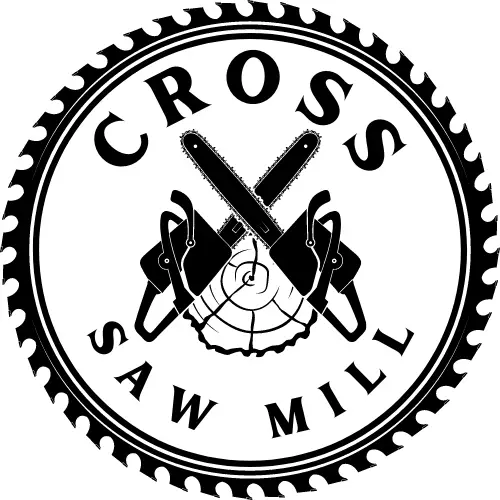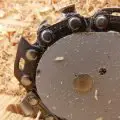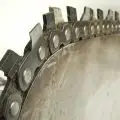Every person who has used a chainsaw for at least six months must deal with the problem of the chainsaw bar overheating. This creates a bothersome scenario when it unexpectedly becomes too hot to operate. Chainsaw bar overheating is typically a very common problem. Action must be taken to prevent the motor and other key components from being harmed by the overheating.
Therefore, it’s crucial to identify the cause of the chainsaw bar overheating and address it as quickly as possible. In this article, you will learn the most common causes of chainsaw bar overheating and what to do with each case to fix it.
Table of Contents

Common Reasons Why Your Chainsaw Bar Overheats and What to Do
The chain of a chainsaw can overheat for several reasons depending on the model, the fuel it uses, the powered system, and the way it is operated. The five typical occurrences that can cause an overheated chainsaw chain bar are described here.
A Mismatch Between the Bar Groove and Chain Drive
The chainsaw chain typically overheats after a novice operator replaces the drive link. The main cause is that the chain drive’s drive link groove is not adequately sunk. The rate of friction will rise if the chainsaw’s internal chain drive does not fit the groove’s shape. The temperature will consequently increase.
Solution
Make sure the bar groove’s width and the chainsaw drive links’ thickness are an exact match. If you bought the items separately, the dimensions should be listed in the product manuals or catalogs. It’s imperative to have a perfectly matched chain for your bar.
Imbalance of Stress on a Heavy Wood Log
The density of various wood logs varies. Not every log deserves to be cut off with the same amount of chainsaw pressure. Most frequently, people exert unexpectedly greater tension while pushing the chainsaw than necessary. At that point, the chainsaw either stops functioning or overheats due to the pressure and stress on the motor.
Solution
You must comprehend the appropriate pressure level in order to cut wood. Start cutting with the least amount of pressure necessary, then gradually raise the pressure. Once you have used your chainsaw for a while, you will know the right amount of pressure to use to not put your chainsaw bar under any unnecessary stress.
It may be worth reading our How to Use a Chainsaw Safely to learn more about using a chainsaw.
Lack of Lubrication on the Chainsaw Chain
In order to prevent the chainsaw from getting stuck, lubricant is utilized. However, using the incorrect lubricant or failing to adjust the lubricating screw can result in issues. Internal friction can be increased by inadequate or dry lubrication, leading to throttle-related issues and overheating.
Solution
It is important to examine if the chainsaw bar and chain oil adjustment screw are jammed or worn out. If it is worn out, your only option is to buy a brand new one to replace it. If you come across a chainsaw bar oil adjustment screw that has been stuck, you must grease the screw to free it.
For how much bar oil you should use, follow the manual’s instructions, and for routine use, oil the chainsaw with a petroleum-based product. Try using something heavier for winter, though. Summer calls for lighter, proper lubricating oil. Visit our Chainsaw Oil Types & Chainsaw Bar and Chain Oil Substitute guides to learn more!
Worn Out Chainsaw Chain
Chainsaws rust and become dull after prolonged storage or neglecting chainsaw bar upkeep and maintenance. Both outcomes have the same impact; the chainsaw won’t operate accurately. Typically, a chainsaw with a fresh, sharp chain will chop the log along its sharp edge. However, a rusted and dull chainsaw creates greater friction as it splits the log of wood, resulting in overheating.
Solution
Never leave your chainsaw idle for an extended period of time because prolonged sitting is a major cause of problems. Next, check to see if the chainsaw chain edge is sharp or not before starting the chainsaw. Make sure that it is properly tightened and sufficiently sharpened. Visit our How to Sharpen a Chainsaw Chain or Blade article for a step-by-step guide!
Improper Raker Height
When using a chainsaw to cut, the term “raker height” is crucial. It’s a minor component of your chainsaw, yet it’s crucial to cutting. Your rakers do degrade significantly with repeated usage, and this eventually causes the chainsaw to overheat or have other problems.
Eventually, inappropriate raker height may be a passive source leading to chainsaw bar heating. Therefore, it is essential to have an appropriate chainsaw raker depth in order to prevent any overheating.
Solution
The raker must be filed down as the only solution to this problem. In order to maintain a good balance, many chainsaw users advise filing off the raker height every fourth or fifth sharpening action. Some of you might believe that lowering the raker height will cause more heat to build up. However, that doesn’t happen in real life.
It is challenging to convert a poor raker into a compatible one. It is often advised that folks replace the raker and get a new one rather than waste time and money. Most importantly, be sure that it is compatible with your chainsaw.
Here’s a useful demonstration of a Husqvarna chainsaw overheating:
FAQs (Frequently Asked Questions)
Are chainsaw bars heat treated?
A low-carbon or manganese steel cutting chain is frequently used in conjunction with hardened and tempered steel alloy chainsaw bars. The bars may be formed from a block of laminated plates or case-hardened, depending on the manufacturing technique. The steel is heat treated to increase its strength and durability.
Why is my chainsaw smoking from exhaust?
There may be a variety of colors if the exhaust is the source of the smoke: The presence of black smoke suggests a clogged air filter. White smoke is a sign that the chainsaw’s condensed water heater is operating. The presence of blue smoke suggests that the engine may be flooded.



